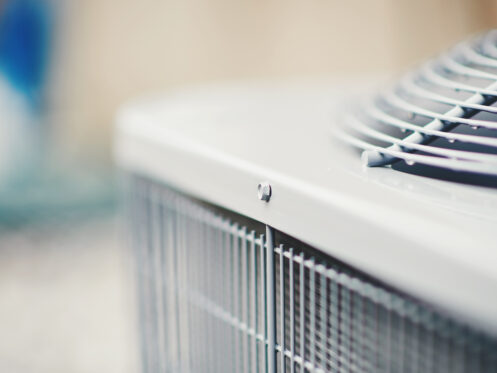The 21st century has been an exciting time in the HVAC space. An emphasis on smaller carbon footprints has led to phenomenal improvements in energy efficiency. Great strides have also been made in smart thermostats, ventilation, air quality, and the use of predictive analysis. Several innovations will soon become more common for residential HVAC systems.
Eco-Friendly Refrigerants
The refrigerants used by heat pumps and air conditioners to keep buildings comfortable significantly contribute to adverse environmental impacts. The industry has focused on developing more eco-friendly alternatives. For instance, the development of Puron allowed the government to ban Freon for non-grandfathered systems in 2020. While less hazardous than traditional coolants, Puron isn’t a green refrigerant. A green refrigerant has only natural ingredients and releases no CFCs and HCFCs.
Green refrigerants aren’t science fiction; they already exist. The main barrier to their widespread use is developing mass production and distribution methods. However, manufacturers expect the green refrigerant market to double by 2030. The U.S. government is also considering incentives that will speed up the implementation of innovative coolants.
Predictive Analysis
Predictive analysis is transforming the HVAC industry by leveraging data to anticipate maintenance needs before they become critical issues. Major brands are now incorporating these features into their top residential systems, following their successful implementation in their commercial versions.
These advanced systems continuously monitor and record performance data, using sophisticated algorithms to analyze this information. By predicting the need for preventative repairs early on, they ensure optimal performance and reduce the risk of unexpected breakdowns. Cloud computing enhances this capability, making the analysis more powerful and accessible. Experts estimate that predictive analysis has the potential to improve homeowner’s HVAC efficiency by 8% and reduce maintenance and repair costs by at least 30%.
Widespread VRF System Adoption
Variable refrigerant flow (VRF) is an advanced alternative to traditional ductless mini-split systems. It is not a new technology; Daikin introduced it in 1982. However, modern innovations have significantly enhanced its energy efficiency and reliability.
VRF systems are commonly used in commercial applications and are also becoming available for residential use. While adoption has yet to be widespread, this is expected to change in the coming years. VRF systems excel at handling varying heating and cooling loads, leading to reduced energy waste and lower daily operating costs.
Another significant advantage of VRF systems is their ability to support a virtually limitless number of indoor units, compared to most mini-splits, which typically cap out at eight. This flexibility makes VRF systems more practical for larger homes, apartment complexes, and condominiums.
Built-In Air Purification
An emphasis on energy-efficient home design has led to tight building envelopes. The lack of natural ventilation can lead to higher concentrations of airborne pollutants. The Environmental Protection Agency (EPA) warns that indoor air pollution is a growing health risk.
Homeowners are installing air purifiers, mechanical ventilation, and humidity control at a record rate. At the same time, the industry is working on systems that support higher-efficiency HVAC filters. Some brands have also announced ducted and ductless systems with integrated air purification, dehumidification, and humidification.
The Internet of Things
The Internet of Things (IoT) refers to the network of interconnected devices that communicate and work together, including smart home devices. IoT is already shaping the modern smart home and is expected to become even more sophisticated in the coming years, with HVAC systems playing an increasingly significant role.
High-end HVAC systems already support cloud computing and feature embedded software and sensors. Smart thermostats can control various devices like smart vents, shades, and ceiling fans, optimizing comfort and energy efficiency. In the near future, even refrigerators may communicate with HVAC systems to request additional cooling when needed.
The IoT also enables real-time monitoring and analysis of various environmental factors such as temperature, relative humidity, and static air pressure. This continuous data collection allows for more precise control and adjustments, leading to improved energy efficiency and overall system performance.
Additionally, IoT integration facilitates predictive maintenance by analyzing data to anticipate potential issues before they become major problems. This not only enhances the reliability of HVAC systems but also reduces maintenance costs and extends the lifespan of the equipment.
Contact the Pros
At SoBellas Home Services, we have been serving the residents of El Paso, TX, and the surrounding areas since 2010. We install, maintain, and repair heating and cooling systems. Additionally, we repair home appliances such as dishwashers, refrigerators, ovens, dryers, and washing machines. Contact us today to schedule an appointment with one of our experienced team members.

